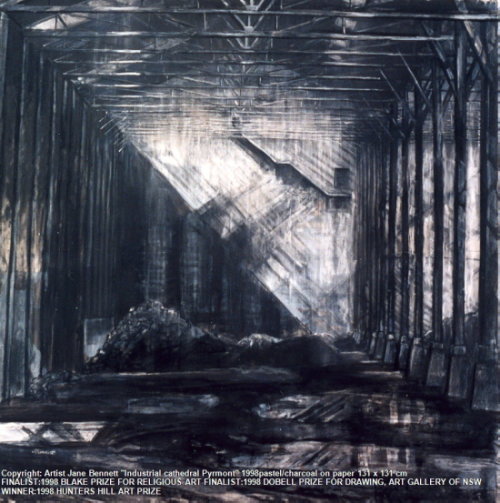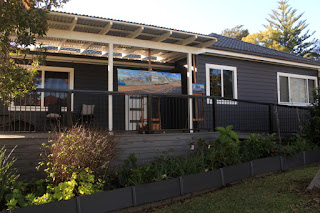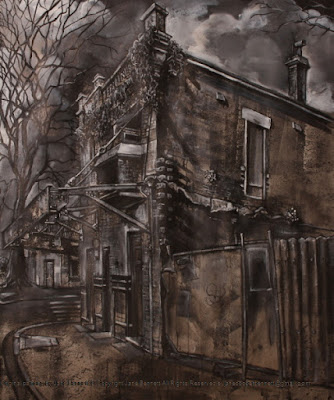This is a painting of the Utility crane in front of Sutherland Dock, Cockatoo Island.

CK36'Cockatoo Island- Crane, Sutherland Dock and the escarpment'
2006 oil on canvas 75 x 100cm
Enquiries
For the last decade, the public has been allowed to visit the island, but when I painted this in 2006, it was still off limits.
The Sydney Harbour Federation Trust was frantically fixing up the infrastructure to be able to open it to tourists. I would travel by barge at the crack of dawn from Mort's Dock with the other workmen.

CK36'Cockatoo Island- Crane, Sutherland Dock and the escarpment'
2006 oil on canvas 75x100cm
Enquiries
In the afternoon, I had to make sure I didn't miss the last barge back to the mainland, or I'd have to spend the night there.
Now there is 'glamping', but back then there were no facilities at all! No tents, no shelter - I occasionally spent the odd night in a tunnel, which was creepy. There wasn't even drinkable water & we all got terribly sick until we learnt to bring our own water!

CK36'Cockatoo Island- Crane, Sutherland Dock and the escarpment'
2006 oil on canvas 75 x 100cm
Enquiries
20 years before, I had painted on the island, near the end of its life as a working shipyard.
Related Posts


























